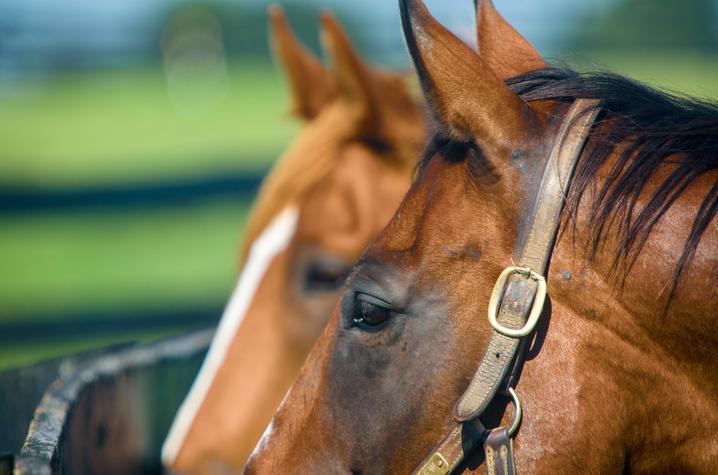In what could be a step forward for equine science, a University of Kentucky Martin-Gatton College of Agriculture, Food and Environment researcher is helping lead a three-year project to map the genetic blueprints of 13 breeds of horses. horses and their relatives.
Funded by a $765,000 award from the US Department of Agriculture’s (USDA) National Institute of Food and Agriculture, the initiative, titled Functionally Annotated Equine Pangenome with Infrastructure for an Accessible, Integrative Community Genomic Resource ,” aims to further understand horse genetics. Researchers hope to pave the way for advances in horse genetics health, performance and disease prevention.
“Traditionally, genetic research has relied on a single reference genome for a species, which may exclude breed-specific variations. In contrast, a pan-genome integrates multiple reference genomes, capturing the unique genetic traits of different breeds ,” said Theodore Kalbfleisch. Ph.D., professor of veterinary science at the Maxwell H. Gluck Equine Research Center in the UK. “This comprehensive approach helps scientists see the full genetic diversity within a species, crucial to understanding traits such as temperament, well-being and disease susceptibility.”
Purpose and goals of the project
Kalbfleisch and his multi-university team will generate accurate, haplotype-resolved genome assemblies for 13 horse breeds, including the Arabian, Belgian, Icelandic and Thoroughbred. They will also expand this study to include a zebra and a donkey. By comparing these genomes, researchers aim to identify genetic factors that influence traits such as temperament, well-being and disease susceptibility.
The team will use advanced sequencing technology to map the horses’ DNA and RNA. DNA carries the genetic instructions for long-term traits, while RNA tells which parts of the DNA are actively producing proteins—the essential building blocks of life.
This involves several key steps:
-
DNA sequencing: The genomic DNA (gDNA) of each breed will be sequenced to identify the complete set of genes.
-
RNA analysis: RNA will be analyzed to understand which genes are active in different tissues.
-
Note: The RNA data will be translated into gDNA, identifying which parts of the genome are being used to make proteins. This helps to understand the function of specific genes.
-
Comparison: By comparing the genomic data of different breeds, researchers can identify genetic differences that contribute to unique traits in each breed.
This research may improve the health, performance and breeding decisions of horses in the equine community along with other farm animals. Additionally, the findings will be shared on a genomics platform for easy access by everyone, regardless of bioinformatics expertise.
The expected results of the project include:
-
Improved health and performance: Insights into genetic factors influencing health and performance, enabling targeted breeding programs.
-
Disease prevention: Identification of genetic markers for disease, allowing early detection and prevention strategies.
-
Expanded understanding: A deeper understanding of equine biology and evolution through comprehensive genetic data.
“This project is not just about horses,” explained Kalbfleisch. “It sets a precedent for genetic research in other farm animals. Techniques and tools from this project can benefit other species, advancing genetic studies and increasing animal health and productivity universally.”
Also involved in the study are researchers from Texas A&M, the University of Nebraska-Lincoln and the University of Minnesota.
This material is based on work supported by the National Institute of Food and Agriculture, US Department of Agriculture, under award number 2024-67015-42330. Any opinions, findings, conclusions, or recommendations expressed in this publication are those of the author(s) and do not necessarily reflect the view of the Department of Agriculture.
/Public Notice. This material from the original organization/author(s) may be current in nature and edited for clarity, style and length. Mirage.News does not take institutional positions or sides and all views, opinions and conclusions expressed herein are solely those of the author(s). Watch it in full here.
